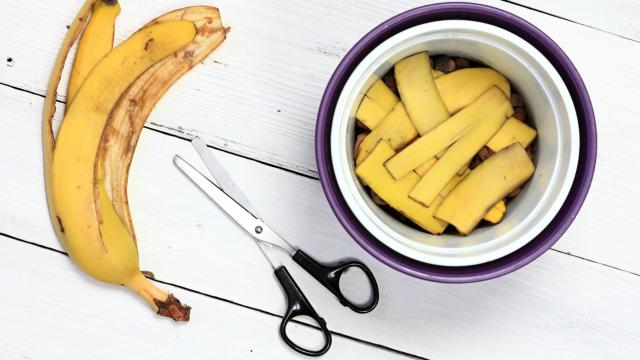We should start by saying that we are not anti-compost. In fact, we have several articles walking you through the ins and outs of the composting process. In a perfect world, everyone would have the time, energy, and space to have their own compost pile or container, and then use the finished product to help their plants grow.
But for many people, and many reasons, the best of composting intentions don’t necessarily translate into actually taking the time to compost. It may sound like your dreams of free plant nourishment will never become a reality, but that’s not the case.
There’s a middle ground between not composting at all, and having a full-on batch of it: Using (non-composted) food scraps instead. Here are a few examples of foods that can go from feeding you, to your plants, courtesy of Michelle Ullman, in an article for BobVila.com.
Banana peels can help plants form healthy roots
The potassium found in banana peels helps plants transfer water between cells, set down healthy roots, assist in fruit and blossom growth, and fend off disease. All you need to do is bury the banana peel next to some outdoor flowering plants.
“Take care to cover it with several inches of soil to prevent insect infestations or odor,” Ullman writes. “As the peel decomposes, it will release its potassium and other nutrients into the soil, to the benefit of the nearby plants.”
Eggshells provide calcium for plants
Eggshells are chock full o’ calcium, which helps strengthen plants’ cell walls. Here’s what to do with them, per Ullman:
Rinse the eggshells thoroughly, let them dry, and then crush with a pestle or a similar grinder. Then work a handful of the ground shells into the soil around your plants, whether in the flower bed or a container.
The nitrogen in coffee helps with foliage growth
Using coffee grounds as plant food requires a delicate balance. On the one hand, they contain plenty of nitrogen, which helps foliage development. On the other hand, too many coffee grounds can stunt plant growth because of the caffeine content and acidity. Here’s Ullman’s advice:
To be safe, never add more than a half-inch layer of coffee grounds around your plants, and cover the grounds with an inch or two of soil to avoid compaction that could prevent water from penetrating the soil.
And of course, if you ever find yourself with the time, space, and/or energy to go all-in with composting, go for it. In the meantime, bury those banana peels.

Leave a Reply
You must be logged in to post a comment.